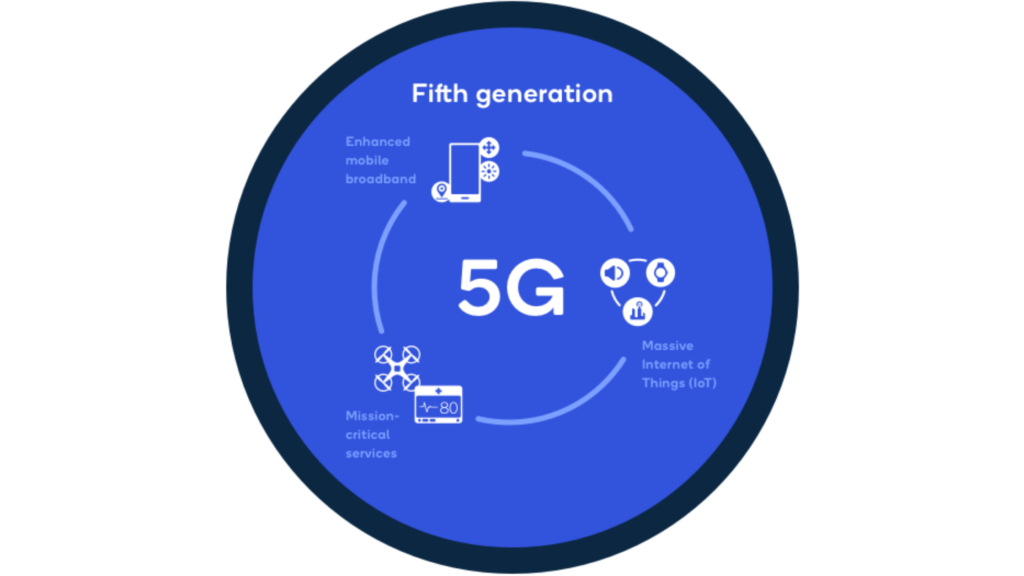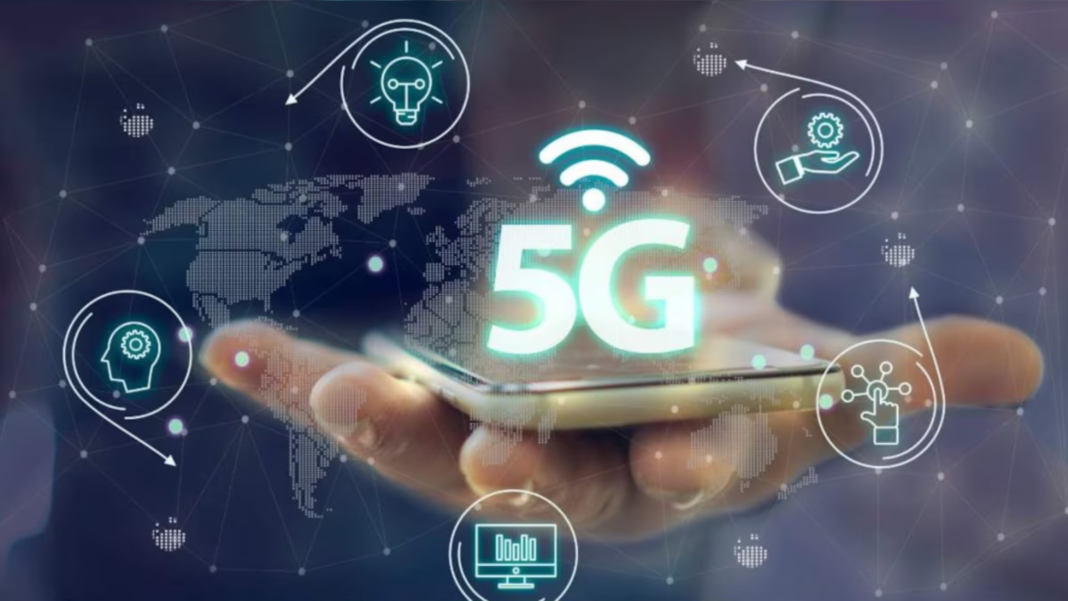In the vortex of technological advancement, 5G technology stands out as a monumental leap forward for digital connectivity. The promise of 5G, with unparalleled speed and reduced latency, foreshadows a revolution across sectors and everyday life. This blog post aims to demystify 5G, lay bare the current state of its global rollout, identify the key players involved, navigate the challenges and controversies it raises, and look at its future implications.
Explanation of 5G Technology

5G stands for fifth-generation cellular wireless technology. Its introduction heralds significant enhancements over 4G networks, primarily regarding higher transmission speeds and remarkably lower latency. What does this mean for us? Imagine downloading full-length movies in seconds, experiencing ultra-smooth streaming, and gaming with virtually no lag. It’s not just about faster smartphones, though. 5G is set to fuel innovation across remote surgery, real-time data access, and augmented reality experiences, altering our world’s fabric.
Overview of Previous Generations:
1G (First Generation):
- Period: 1980s
- Key Features:
- Analogue cellular technology.
- Basic voice communication.
- Limited capacity, low security, and no data services.
- Drawbacks:
- Limited functionality, prone to interference and eavesdropping.
2G (Second Generation):
- Period: 1990s
- Key Features:
- Digital technology (GSM, CDMA).
- Introduced text messaging (SMS).
- Improved voice quality and capacity.
- Drawbacks:
- Still primarily focused on voice services, limited data capabilities.
3G (Third Generation):
- Period: Early 2000s
- Key Features:
- Faster data transfer (up to 2 Mbps).
- Mobile internet access, video calling, and multimedia services were introduced.
- Enhanced security and efficiency.
- Drawbacks:
- Limited coverage in some regions, relatively high power consumption.
4G (Fourth Generation):
- Period: Late 2000s to 2010s
- Key Features:
- High-speed data transfer (up to 1 Gbps).
- Enhanced mobile broadband and streaming services.
- Improved voice quality (VoLTE) and reduced latency.
- Drawbacks:
- Limited support for massive IoT connectivity.
- Network congestion in densely populated areas.
Comparison with 5G:

- Data Transfer Speeds:
- 1G to 4G: Gradual improvement in data speeds.
- 5G: Dramatic increase with speeds up to 20 Gbps, facilitating faster downloads, low latency, and improved overall performance.
- Latency:
- 1G to 4G: Varied latency, typically in the range of tens to hundreds of milliseconds.
- 5G: Aims for ultra-low latency, as low as one millisecond, crucial for real-time applications like AR, VR, and autonomous vehicles.
- Network Capacity:
- 1G to 4G: Limited capacity, leading to network congestion in crowded areas.
- 5G: Designed to support a significantly more significant number of devices simultaneously, catering to the demands of the IoT era.
- Frequency Bands:
- 1G to 4G: Primarily operated in lower-frequency bands.
- 5G: Utilizes a broader spectrum, including higher-frequency millimetre waves, enabling more extensive data transmission and increased network efficiency.
- Energy Efficiency:
- 1G to 4G: Generally higher power consumption.
- 5G: Incorporates features like network slicing and improved efficiency, leading to enhanced energy efficiency.
- Network Slicing:
- 1G to 4G: Shared network infrastructure with limited customization.
- 5G: Introduces network slicing, allowing the creation of virtualized, dedicated networks for specific applications or industries.
- Security Features:
- 1G to 4G: Basic security measures with vulnerabilities.
- 5G: Enhances security protocols, including improved encryption, authentication, and network slicing isolation, addressing the increased connectivity and data exchange in the 5G era.
Current Status of 5G Rollout
The race to 5G is well and truly underway, with several countries positioning themselves at the forefront of this technology wave. Nations like South Korea, China, and the United States are aggressively pushing toward national coverage. However, it’s not just a national affair—a global transformation requiring harmonizing standards and interoperability across borders.
Key Players in the 5G Industry
The 5G stage is crowded with heavyweight telecom giants like Huawei, Ericsson, and Qualcomm, each vying for a slice of the futuristic pie. There’s fierce competition and strategic partnerships, as these companies recognize the need for collaboration to navigate the complex web of technological, political, and infrastructural challenges that 5G brings.

Challenges and Controversies
Deploying 5G is no walk in the park. Operators face hurdles like establishing the necessary dense network of towers and securing spectrum rights in an already crowded radio-frequency environment. Additionally, controversial discussions surrounding the potential health impacts of 5G radiation have ignited despite regulatory agencies assuring public safety standards are met.
These complexities are matched by geopolitical wrangling over control and security of 5G networks, a testament to the high stakes of next-gen mobile connectivity.
Potential Use Cases for 5G
The tentacles of 5G extend into almost every domain. We’re looking beyond consumer electronics to realms where 5G could enable intelligent cities flush with sensors and autonomous vehicles to communicate seamlessly. It’s the anchor for IoT (Internet of Things), where millions of devices collect and transmit data, empowering real-time decisions and driving efficiency.
Future Implications of 5G Technology

The future implications of 5G technology are vast and transformative, promising to reshape various aspects of our daily lives and industries. With its unprecedented speed, low latency, and increased capacity, 5G is set to revolutionize communication, connectivity, and technological innovation.
- Enhanced Connectivity:
5G technology will provide faster and more reliable connections, facilitating seamless device communication. This increased connectivity is crucial for the Internet of Things (IoT), enabling a network supporting many interconnected devices.
- Smart Cities and Infrastructure:
The implementation of 5G will contribute to the development of smart cities. From traffic management to energy efficiency, 5G’s low latency and high bandwidth will support deploying intelligent systems that enhance urban living.
- IoT Revolution:
5G will catalyze the IoT revolution, allowing devices to communicate in real time without delays. This has implications for various sectors, including healthcare, manufacturing, agriculture, and transportation, where interconnected devices can optimize processes and improve efficiency.
- Advancements in Healthcare:
The healthcare industry stands to benefit significantly from 5G. Remote surgeries, telemedicine, and real-time patient monitoring will become more accessible, improving healthcare outcomes and expanding medical services to remote areas.
- Augmented and Virtual Reality (AR/VR):
5G’s high data speeds and low latency will elevate the immersive experiences offered by AR and VR technologies. This opens up new gaming, education, training simulations, and virtual tourism possibilities.
- Economic Growth and Innovation:
The widespread adoption of 5G is expected to drive economic growth by fostering innovation across industries. Businesses will leverage the technology to create new products, services, and business models, resulting in increased productivity and competitiveness.
- Autonomous Vehicles:
The automotive industry will undergo a significant transformation with 5G, as it supports the communication needs of autonomous vehicles. Real-time data exchange between vehicles and infrastructure will enhance safety, traffic management, and navigation.
- Media and Entertainment Evolution:
Streaming services, gaming, and immersive media experiences will be boosted with 5G. The technology’s high data speeds will allow seamless content delivery, high-quality streaming, and interactive gaming experiences.
- Environmental Impact:
The efficiency gains by 5G can contribute to reducing energy consumption in various sectors. Smart grids, efficient transportation systems, and optimized resource management can create a more sustainable future.
As 5G continues to be deployed globally, its far-reaching implications will unfold, ushering in a new era of connectivity, innovation, and technological advancement. However, it is essential to address potential challenges, such as cybersecurity concerns and infrastructure development, to harness this groundbreaking technology’s potential benefits fully.
Conclusion
The ascent of 5G technology is akin to a global symphony—with different countries, companies, and communities playing their part amid excitement and uncertainty. Like any consequential technology shift, 5G carries its share of controversy and complex realities. Yet, the overall tune resonates with hope and anticipation for the boundless possibilities that this new era of connectivity promises. As we keep a keen eye on the evolving landscape, one thing remains clear: 5G could redefine the way we interact with the world and each other, and its full potential is only just beginning to unfold.
Tips for Transitioning to 5G Technology
As businesses and individuals prepare to embrace 5G technology, here are a few tips to facilitate a smoother transition:
- Understand Your Needs: Identify how 5G could benefit you or your business. Be it faster data speeds for personal use or real-time analytics for business operations, understanding your specific needs can help you leverage 5G effectively.
- Invest in Compatible Devices: Ensure your devices are 5G compatible. This might mean upgrading your smartphone or other devices to maximize the new network capabilities.
- Plan Your Budget: Transitioning to 5G requires investing in new infrastructure or devices. Therefore, planning your budget ahead of time can ensure a seamless transition without financial hiccups.
- Stay Informed: Keep abreast of the latest developments in 5G technology. Understanding the technology, its rollout status, and implications can help you make informed decisions.
- Prioritize Security: With the advent of 5G, cybersecurity becomes paramount. Make sure to adopt robust security measures to protect your data in the new 5G environment.
- Consider the Health and Environmental Impacts: As controversies around the potential health and environmental impacts of 5G technology continue, it’s essential to stay informed and consider these factors when transitioning.
Remember, 5G isn’t just about faster connection speeds. It’s a game-changer that can redefine our digital landscape. Embracing it requires thoughtful preparation and informed decision-making.
Frequently Asked Questions (FAQ)
- What is 5G?
5G stands for fifth-generation cellular wireless technology. It offers significant enhancements over previous networks, with higher transmission speeds and remarkably lower latency.
- Who are the key players in the 5G industry?
The leading players in the industry include telecom giants like Huawei, Ericsson, and Qualcomm.
- What are some challenges in deploying 5G?
The challenges range from establishing a dense network of towers, securing spectrum rights, addressing potential health impacts, and navigating geopolitical issues related to the control and security of 5G networks.
- What are potential use cases for 5G?
5G has broad applications beyond consumer electronics. It can enable smart cities, autonomous vehicles, and IoT (Internet of Things), where devices collect and transmit data in real time.
- How will 5G impact the future?
5G is anticipated to drive economic growth, create jobs, and impact societies by enhancing accessibility and fostering innovation. It also brings challenges like ensuring equitable access, mitigating cybersecurity threats, and rethinking data privacy and technology use governance.
- How can I prepare for the transition to 5G?
Key steps include:
- Understanding your needs.
- Investing in compatible devices.
- Planning your budget.
- Staying informed about 5G developments.
- Prioritizing security.
- Considering potential health and environmental impacts.
Here is previous article.


